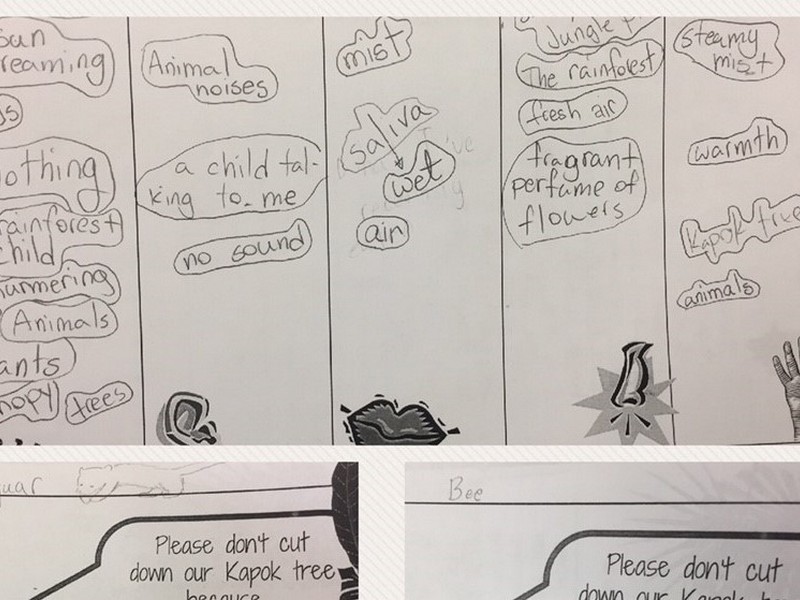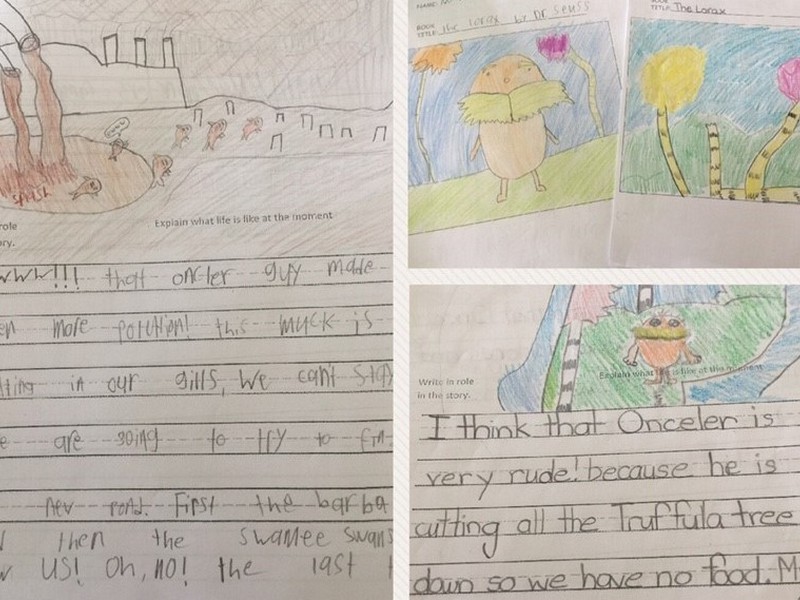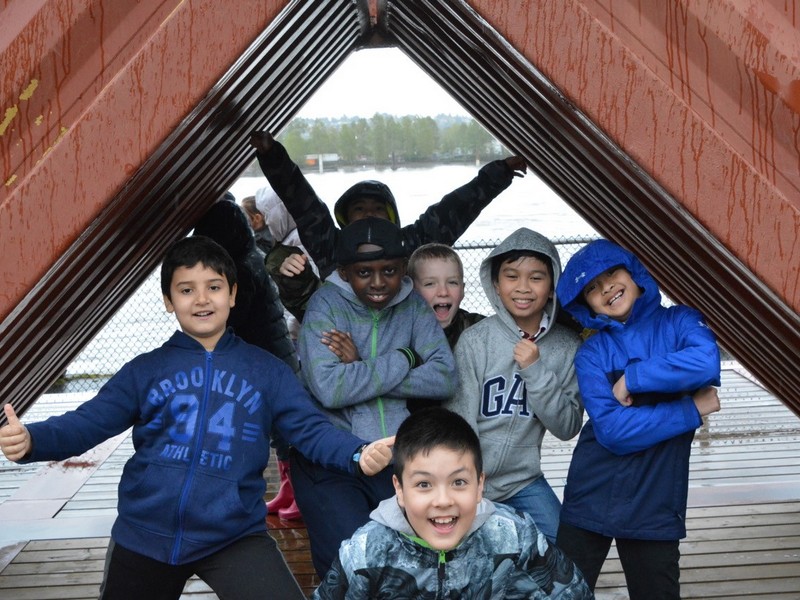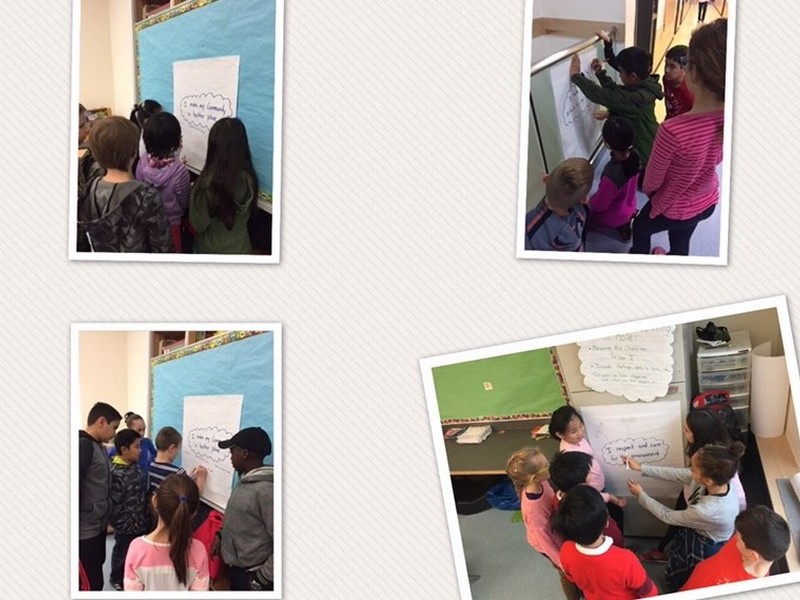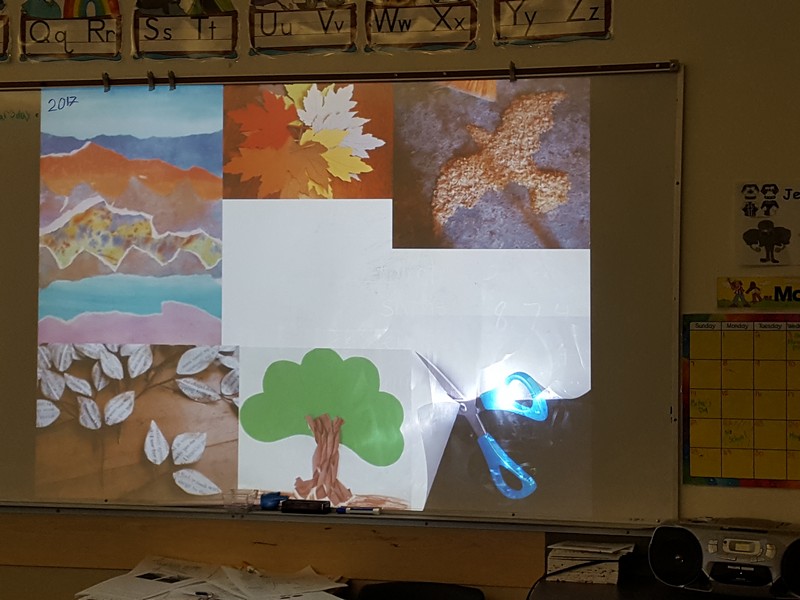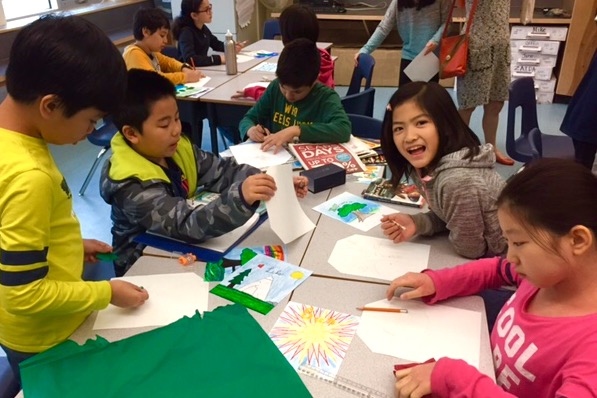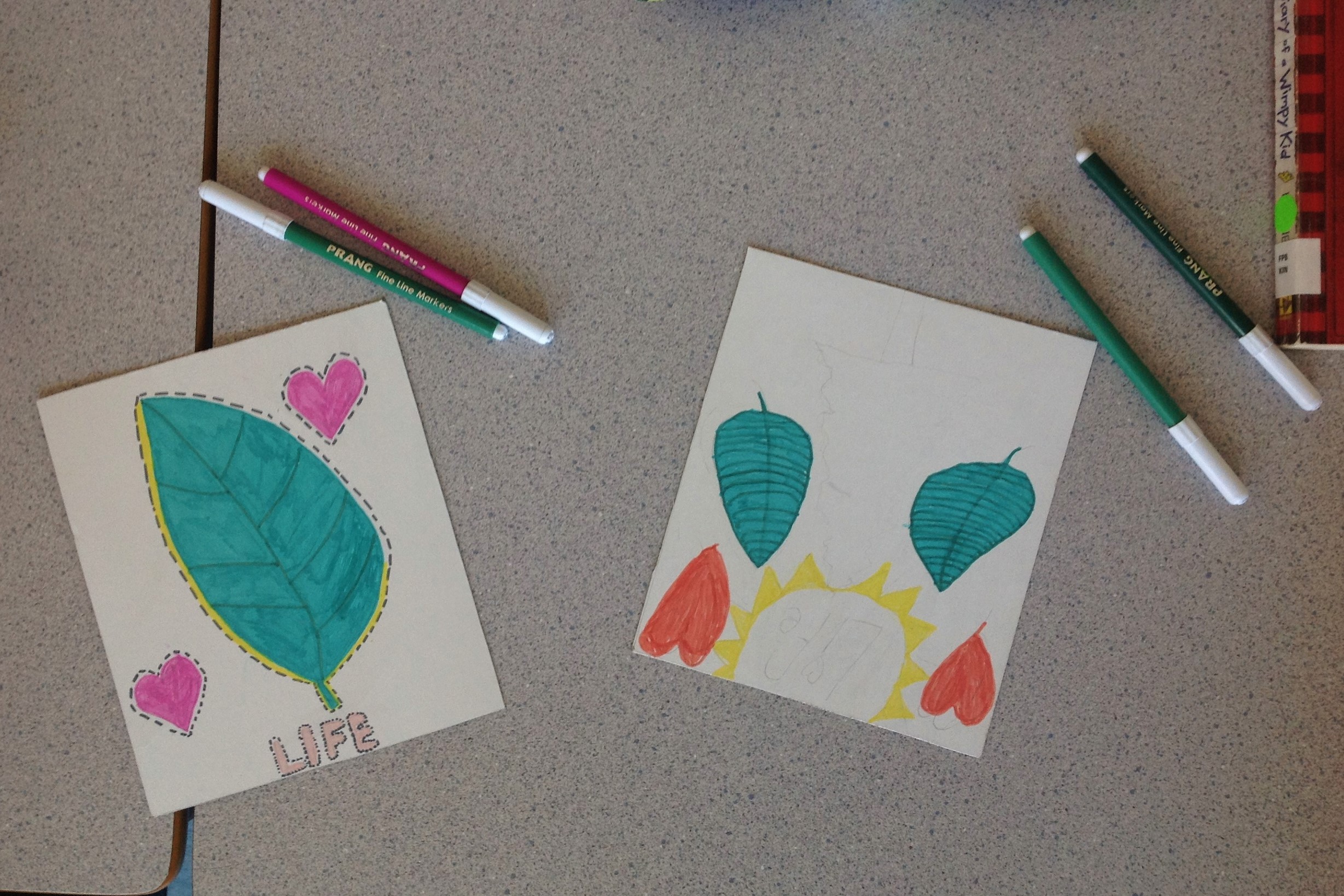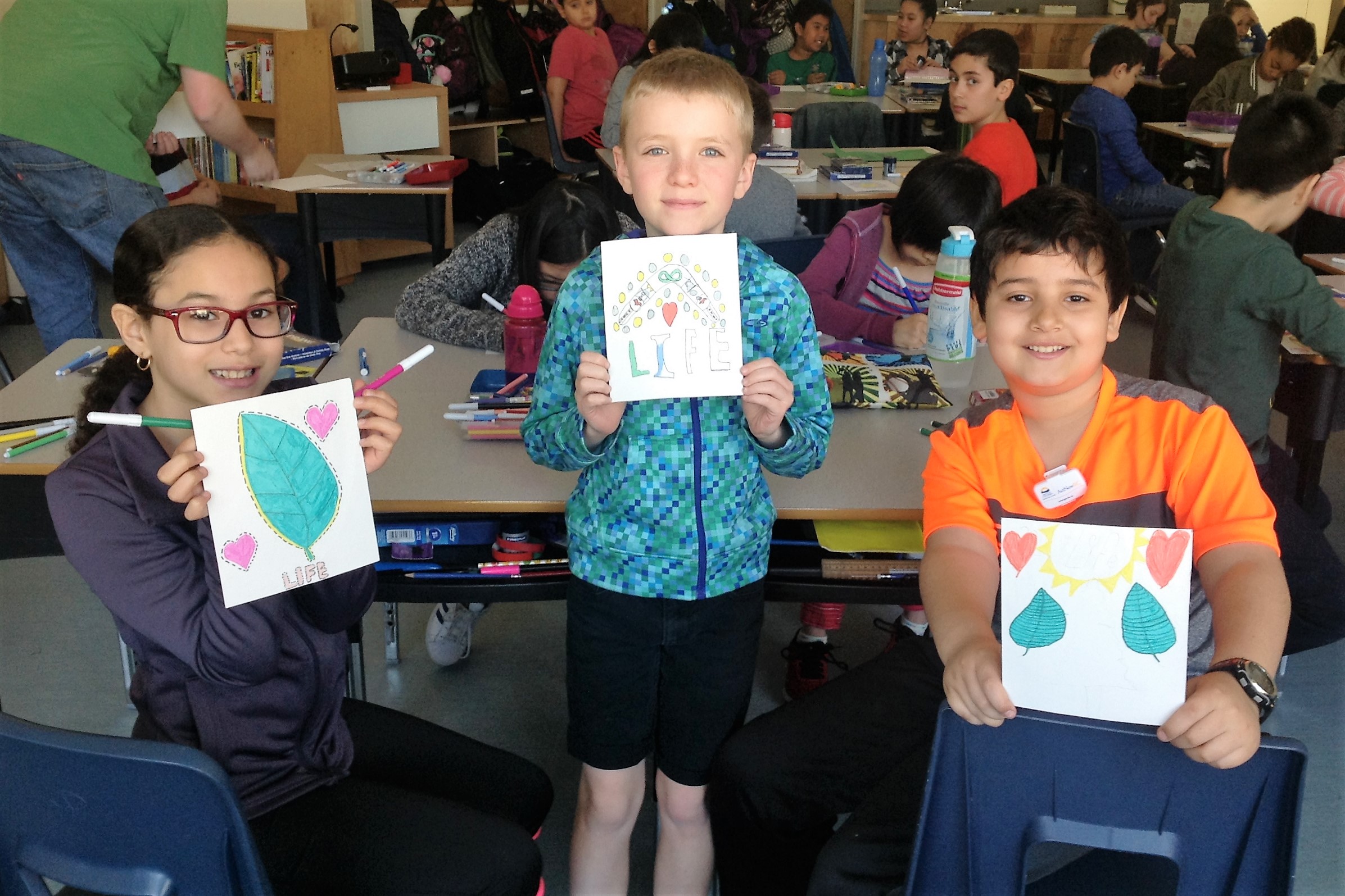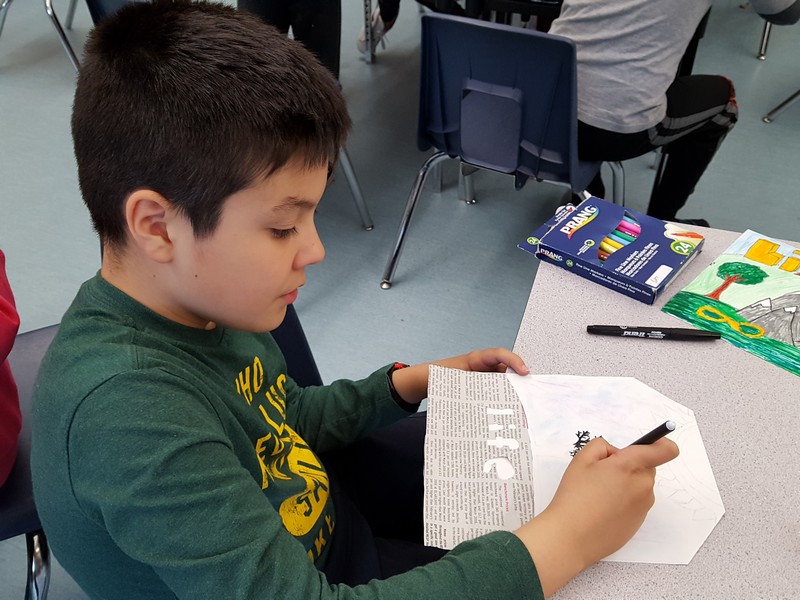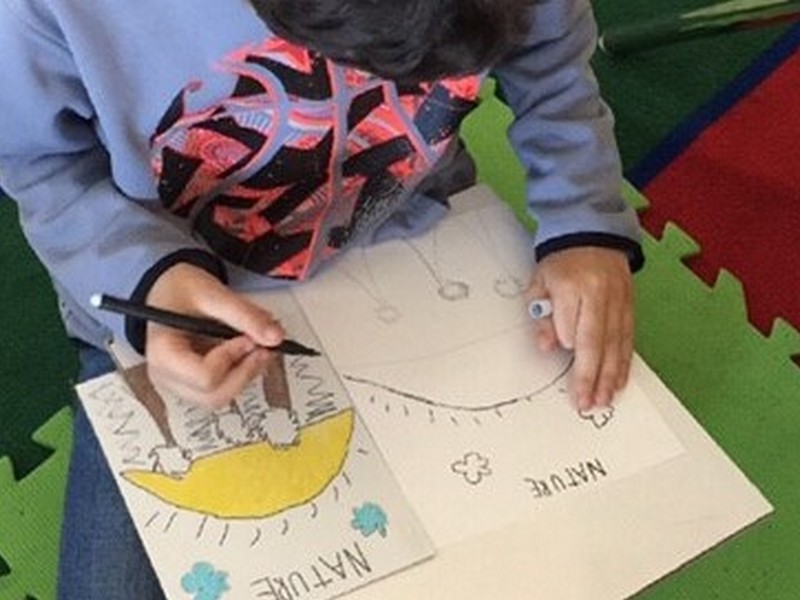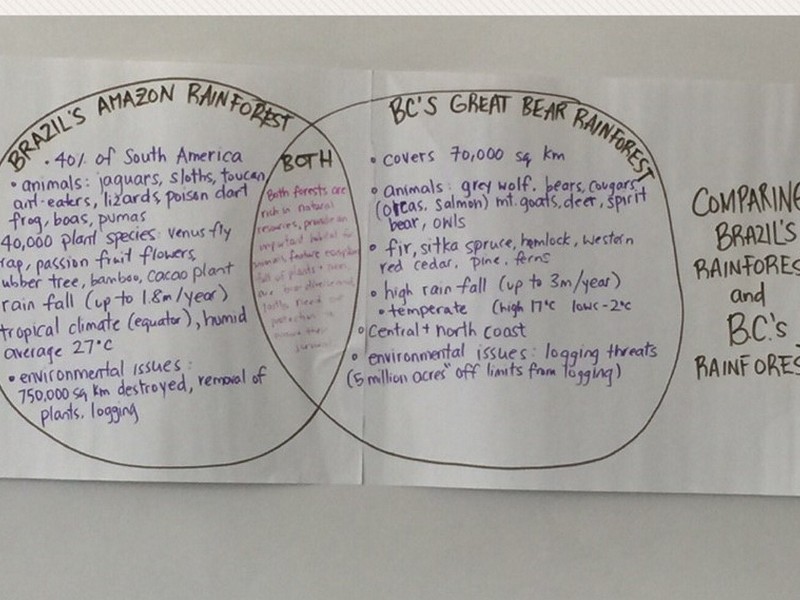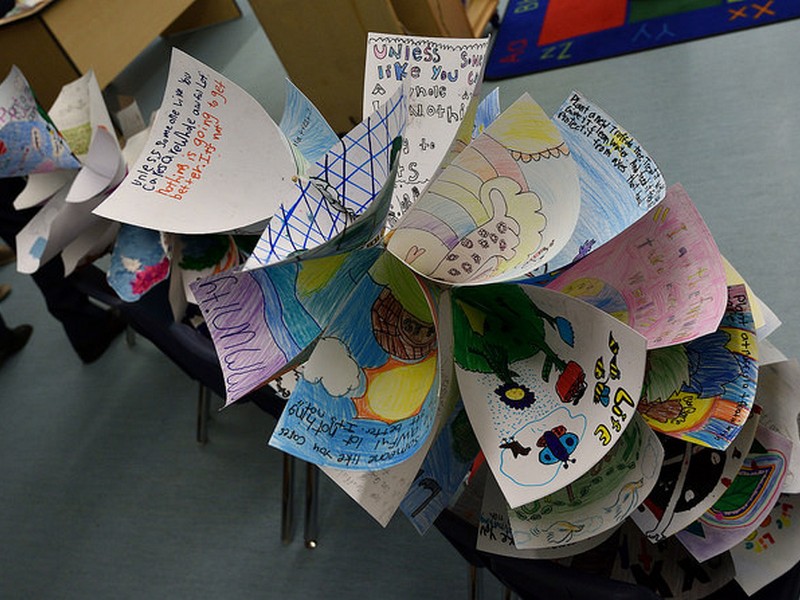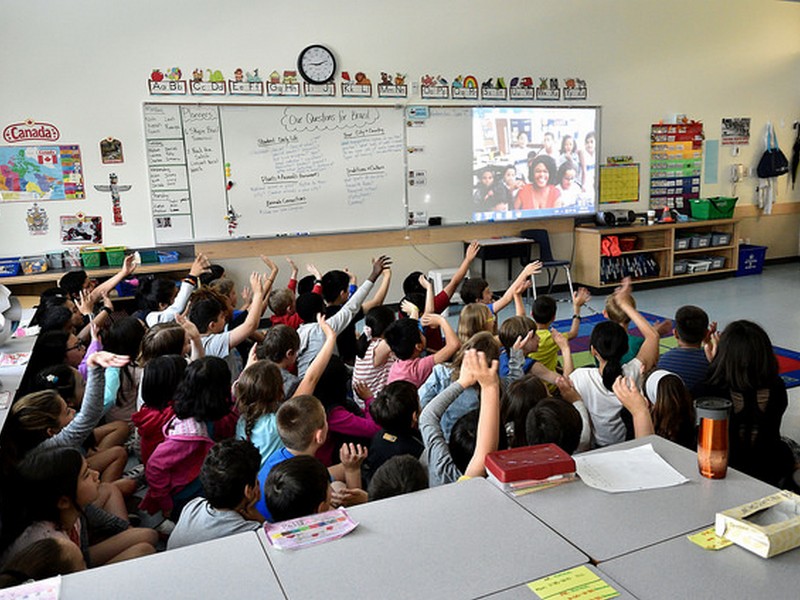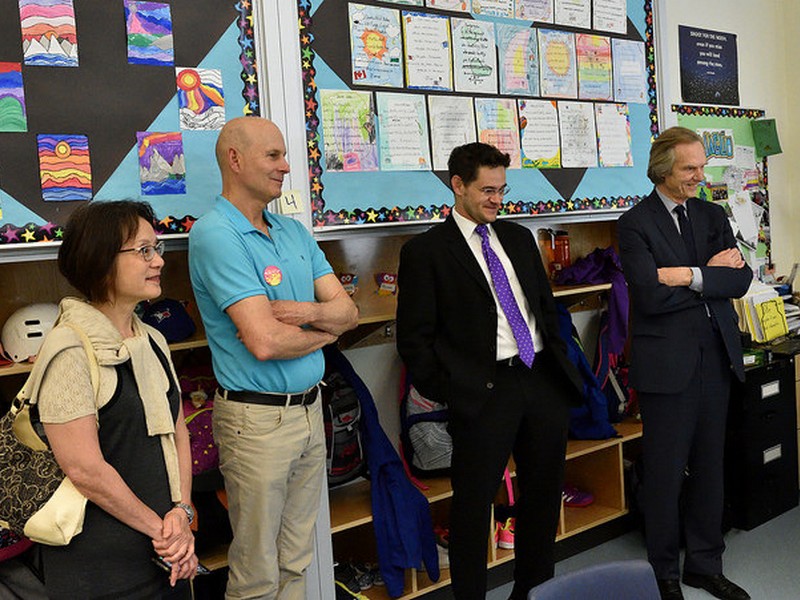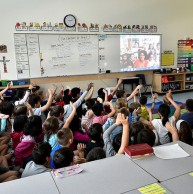École Qayqayt Elementary: Environmental Stewardship
Arts Education, Language Arts, Science, Social Studies
School: École QaytQayt Elementary School
Teacher: Amy Bothwell, Sonia Maglio
Artist Collaborators: Stephen Booth
Class: Grade 3 and Grade 4/5
Overview
This BIG IDEAS project took place at École Qayqayt Elementary in New Westminster for students in grades 3, 4, and 5, and involved learning in science, geography, history, and visual arts. The project was entitled “An Intercultural Examination of Environmental Stewardship: Building Enduring Understandings with Brazil and BC’s Human Impact on Physical Geography.” Students explored their own physical environments and local cultures, and then used the same themes to find connections with the landscapes and cultures of Brazil.
Guided by their teachers and artist collaborator Stephen Booth, students focused on the theme of environmental stewardship: what it is, its purpose and importance, and its role in their own lives. Responding to inquiry questions allowed students to define and express their visions of environmental stewardship, and the ways in which humans influence and are influenced by their physical environments.
With the guidance of their artist collaborator and teachers, students used wood- and tree-based materials to create collaborative visual artworks, furthering their experiences as participants in a collaborative project with a common goal and reminding them of the connection between human production and the physical origins of materials.
Connection to the Vancouver Biennale Exhibition
Students studied the works of Vik Muniz, in particular his work in the world’s largest garbage dump outside Rio de Janeiro and his more local work, Wolf, made from items from nature in Squamish, BC. Muniz’ work helped students make connections between BC and Brazil, and the importance of environmental stewardship within and across cultures and communities.
Students took a walking trip to Konstantin Dimopoulos’ The Blue Trees in New Westminster Pier Park. They used The Blue Trees as the starting point of a discussion about how art can disrupt the everyday and how a change to just one element of an item or feature – in this case, the colour of the trees – can take that item/feature from ubiquitous to novel. The artist collaborator also took the opportunity to discuss mindful creation of artwork when he emphasized Dimopoulos’ use of environmentally friendly pigments.
During the same walking trip, students visited Jose Resende’s WOW WESTMINSTER. The artist collaborator used WOW WESTMINSTER to further their discussions of ubiquity and the everyday, and encouraged students move around and through the art in order to experience the shipping crates through a new lens. Students and the artist collaborator also talked about New Westminster’s physical features, such as its proximity to water, and how its geography has shaped its history as a site for migration and movement.
BIG IDEAS
- The mind and body work together when creating works of art.
- Creative experiences involve an interplay between exploration, inquiry, and purposeful choice.
- Creative expression is a means to explore and share one’s identity within a community.
- Artists experiment in a variety of ways to discover new possibilities.
- Exploring works of art exposes us to diverse values, knowledge, and perspectives.
- Engaging in creative expression and experiences expands people’s sense of identity and belonging.
- Artists experiment in a variety of ways to discover new possibilities and perspectives.
- Works of art influence and are influenced by the world around us.
Guiding Questions
- How do our actions affect our environment?
- How is our physical environment and resources unique to our Country/ Province?
- How do people living in different areas of the world affect their local environments?
- How can we practice and promote environmental awareness to lessen our impact?
Learning Process and Principles
In order to support student inquiry and a collaborative environment, teachers and the artist collaborator emphasized:
- A safe learning environment that allows for open discussions where student voices and opinions are valued
- Hands-on activities that promote student inquiry and foster individual exploration
- Opportunities for rich collaboration amongst students and community members
- Transformative processes that allow students to extend, analyse and deepen understanding and connection
- Explorations that students can relate to personally and emotionally
Cross-Curricular Access
Social Studies – Big Ideas
- The pursuit of valuable natural resources has played a key role in changing the land, people, and communities of Canada.
- Natural resources continue to shape the economy and identity of different regions of Canada.
Social Studies – Content:
- Relationship between humans and their environment
- Physiographic features and natural resources of Canada
- Resources and economic development in different regions of Canada
Science – Big Ideas
- Living things are diverse, can be grouped, and interact in their ecosystems.
- All living things sense and respond to their environment
Science – Content
- Biodiversity in the local environment
- Major local landforms
- Biomes as large regions with similar environmental features
- Local types of earth materials
- First Peoples concepts of interconnectedness in the environment
- The nature of sustainable practices around BC’s resources
Language Arts and Literature
Students read the following books to support their inquiries into environmental stewardship, community, and collaborative action:
- Operation Redwood – S. Terrell
- Heroes of the Environment – Harriet Rohmer
- The Story of Frog Belly Rat Bone – Timothy Basil Ering
- The Lorax – Dr. Seuss
- The Great Kapok Tree – Lynn Cherry
Timeline and Student Creation
Throughout project
- Participants have partnered with Affonso Várzea, an elementary school in Rio, Brazil, who are running a parallel program entitled “How do humans affect the environment?”. Both schools will be exploring and comparing Brazilian and Canadian environments within the context of environmental stewardship, community action, and cross-cultural connection.
April 2017
- First meeting between artist collaborator Stephen Booth and students; introduction to themes and concepts that will shape later artistic production.
- By this point students had finished reading Operation Redwood, Heroes of the Environment, The Lorax, and The Story of Frog Belly Rat Bone, to be used as reference points throughout the creation of their projects.
May 2017
- Student visits to The Blue Trees and WOW WESTMINSTER, facilitated by artist collaborator.
- Students visited the VanDusen Botanical Gardens and completed the “Art in the Garden” self-guided tour.
- Students began production of visual art based on previous sessions and scaffolding. Artist collaborator Stephen Booth led a talk about the relationship between media, design choices, and message, and encouraged students to brainstorm and plan before beginning to produce their work. Students created small-scale works with themes of environmental stewardship and community which incorporated bold imagery, symbols, and text, to be transformed into a collaborative large-scale work.
- Students continued production of individual art pieces to be combined into a collaborative “pinecone” by artist collaborator. Guided by their teachers and collaborator, students made collages using different wood-based materials. They demonstrated their understanding of the link between representation and real and experimented with different methods of image creation.
- The students were thrilled to think of a classroom in Brazil doing parallel learning. The class started by accessing their prior knowledge about Brazil. Lots of connections to the Rio Olympics and Soccer were shared! Next students were asked to record their questions about Brazil. The class then used the projector to share some of the information about Brazil focusing on the Land, Environment and Schools. Throughout students were asked to note the similarities and differences between Brazil and Canada.In the afternoon the teachers paired multi-age partners with chromebooks and asked half the group to research the Amazon Rainforest and half to research the Great Bear Rainforest in BC. Students were to record notes on climate, plants, animals, characteristics and environmental issues. The students then got back together to compare and contrast forests, and placed their findings in a venn diagram. Although many differences were shared, they were able to construct a sentence to show the similarities:“Both forests are rich in natural resources, provide an important habitat for many animals, feature ecosystems full of plants and trees, are bio-diverse and, lastly, need our protection to ensure their survival.”The Brazil in School materials were great; the information was thoughtful and students loved the photos.
June 2017
- Students sang with the Artist Response Team in their show “Rock the Salish Sea“, expressing their themes of environmental stewardship and community responsibility through music.
Parallel BIG IDEAS Projects at Affonso Várzea, Rio, Brazil
- March, 2017 – Initial Contact with Canadian School – Select an Activity
Plan activities that will address the following area: How humans affect environment? Make resources available including internet access and technological tools; sharing through photos, videos, reports of development of activities. - March to April, 2017 – The Lorax is our helper – Introduce the story and the movie about The Lorax by Dr. Seuss
Present through educational videos and story different context about the Lorax and perform through drawings, painting using recycle materials to show their point of view by building their own stories
Show the importance of showing kindness to others and also respect of the environment - March to April, 2017 – Task 1 Self-Knowledge – Allow students to express their real feeling and about their daily life and environment
Encourage students to indicate situations they LIKE and DISLIKE about environment in their community and how Lorax can help them to solve the problems there. Present their views in a board. Allow them to express their real feelings through art (drawing, videos and painting) - May to June, 2017 – Task 2 Exchange Ideas – Allow students to keep contact with Canadian students
Encourage students to communicate and exchange ideas with École Qayqayt and ask questions about the project, culture and daily life in Canada through teleconference.
For more details about the Brazilian School BIG IDEAS Project: Read here.
Reflection
Coming soon
Credits
Photos at the WOW Westminster by Roaming-the-planet. Learning case prepared by Mia Mushinski, UBC 2017 Teacher Candidate in collaboration with project teachers and artist collaborator.

